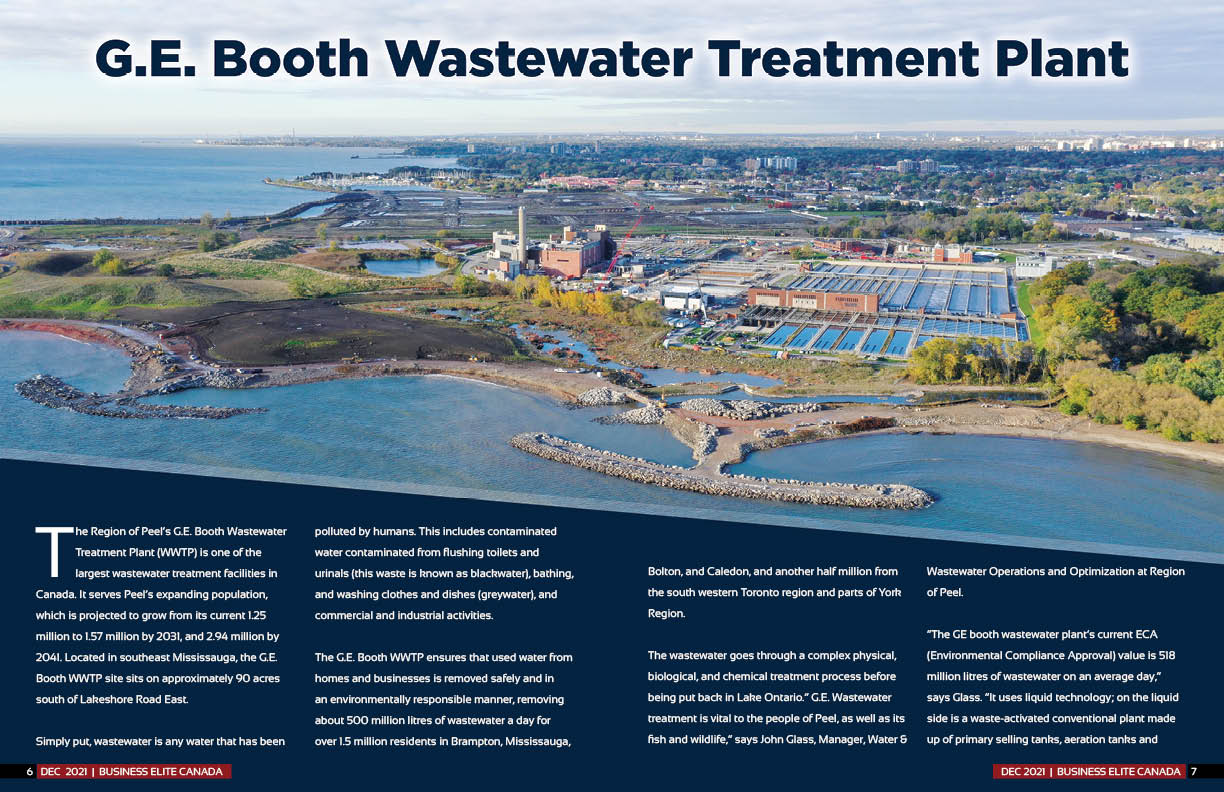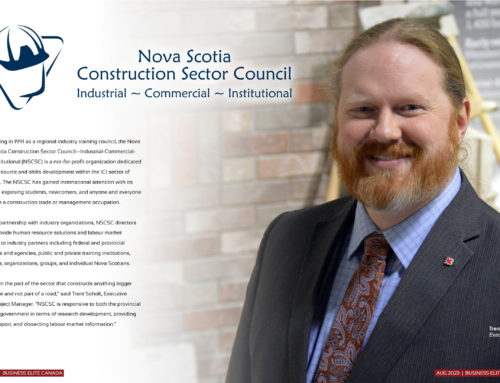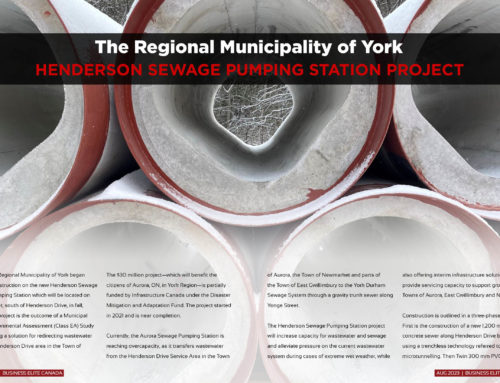The Region of Peel’s G.E. Booth Wastewater Treatment Plant (WWTP) is one of the largest wastewater treatment facilities in Canada. It serves Peel’s expanding population, which is projected to grow from its current 1.25 million to 1.57 million by 2031, and 2.94 million by 2041. Located in southeast Mississauga, the G.E. Booth WWTP site sits on approximately 90 acres south of Lakeshore Road East.
Simply put, wastewater is any water that has been polluted by humans. This includes contaminated water contaminated from flushing toilets and urinals (this waste is known as blackwater), bathing, and washing clothes and dishes (greywater), and commercial and industrial activities.
The G.E. Booth WWTP ensures that used water from homes and businesses is removed safely and in an environmentally responsible manner, removing about 500 million litres of wastewater a day for over 1.5 million residents in Brampton, Mississauga, Bolton, and Caledon, and another half million from the south western Toronto region and parts of York Region.
The wastewater goes through a complex physical, biological, and chemical treatment process before being put back in Lake Ontario.” G.E. Wastewater treatment is vital to the people of Peel, as well as its fish and wildlife,” says John Glass, Manager, Water & Wastewater Operations and Optimization at Region of Peel.
“The GE booth wastewater plant’s current ECA (Environmental Compliance Approval) value is 518 million litres of wastewater on an average day,” says Glass. “It uses liquid technology; on the liquid side is a waste-activated conventional plant made up of primary selling tanks, aeration tanks and then secondary Clarification. On the biosolids end, it’s a thickening and dewatering – system using centrifuges and then an incineration system. The incineration system also services the other large wastewater treatment plant in Peel being, which is the Clarkson WWTP.”
Peel Master Plan
In 2013, the Region of Peel initiated a study of a new Water and Wastewater Master Plan for its lake-based systems to update its servicing strategies. This masterplan was updated in 2020 and is a critical component for the Region’s growth and service-provision strategies.
What role does G.E. Booth play in this strategy? A big one.
The Region of Peel partnered with CIMA Consulting for the design of a new plant at the G. E. Booth Wastewater Treatment Plant in Mississauga. The total construction value of the new plant is $272 million.
The question posed to the team was ‘What is the best way to replace capacity but also reorientate assets on site, like larger conduits, power systems, communication systems, etc.?’ In essence, a roadmap for the expansion and renovation. “We mixed those two activities, replacing exciting assets, while preparing the site for expansion.”
With the original G.E. Booth WWTP being built in the 1950s, Glass explains that it has been expanded or modified around 75 different times in its life. “There’s always been active construction—it’s never not been in a construction condition,” he says. “What changes is – how intense that construction actually is. This does make the site a little bit more complicated just because you have all those different historical designs on one site, as well as being within the boundaries of two distinct conservation offices.”
“The goal is to have diversification, or not one singular system, especially at the Clarkson WWTP where it uses a digestion system—converting biosolids through the removal of viruses and pathogens so it allows us to reuse the biosolids as fertilizer or another beneficial option,” says Glass. “Within our EA goals we are hoping to get 50 per cent of our biosolid for a land application reuse.”
The G.E. Booth WWTP planning was done in accordance to best practises. Typically, things like cogeneration power reduction or chemical reduction are top of mind for engineers. Glass says this project looked more into long-term land planning.
“The G. E. Booth site, is 95 per cent built out and the landmass is irregular, – (and two conservation areas overlapping), so it’s a congested space,” says Glass. “We ended up altering the way we did the masterplan. We considered within the investment, ways that keep the existing infrastructure up and operational, while dealing with the expansion requirements. This way we benefit the existing system and can also work on the expansion requirements. In the past, we looked at those as two individual tasks, not as one.”
It’s laid out exactly where you’re going to go next. Now, you may choose a different technology and a specific tankage, but where that tank is going to be has been mapped out.”
According to the Master Plan, there will be a 40 per cent increase in population by 2041, resulting in 2.94 million residents. Forward-thinking planning of G.E. Booth will determine how the Region’s water and wastewater infrastructure will support growth in a sustainable and financially responsible manner.






